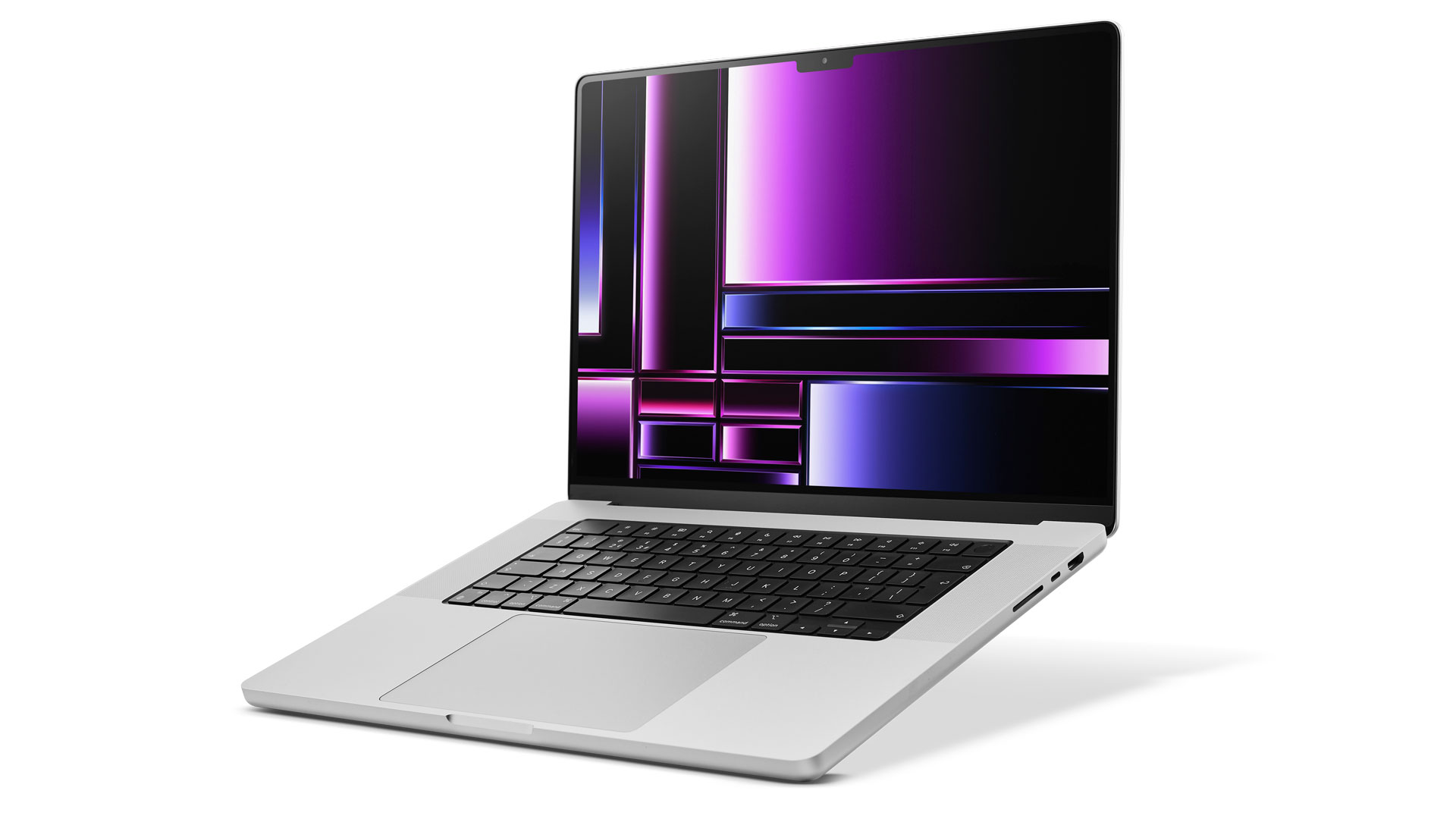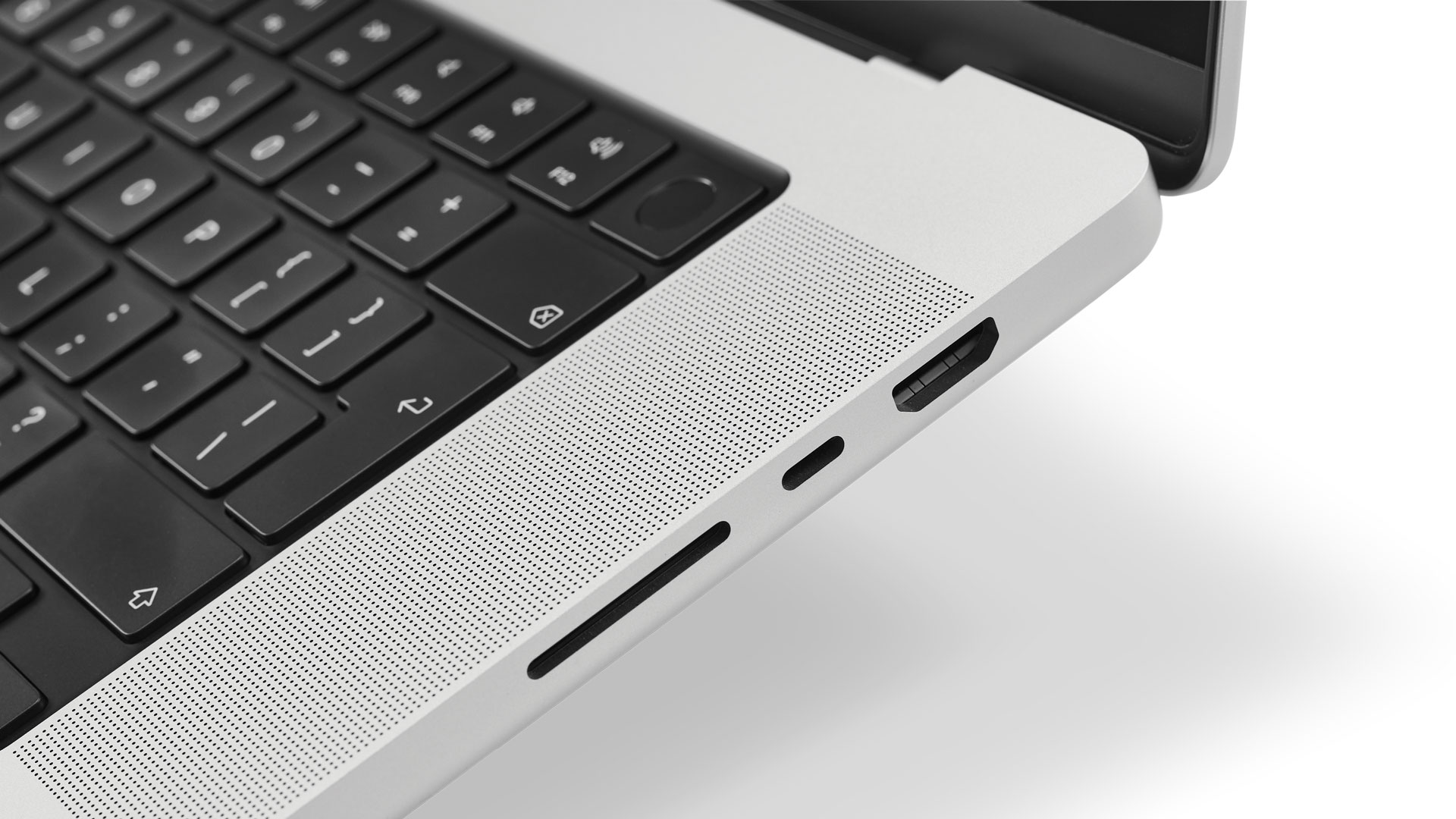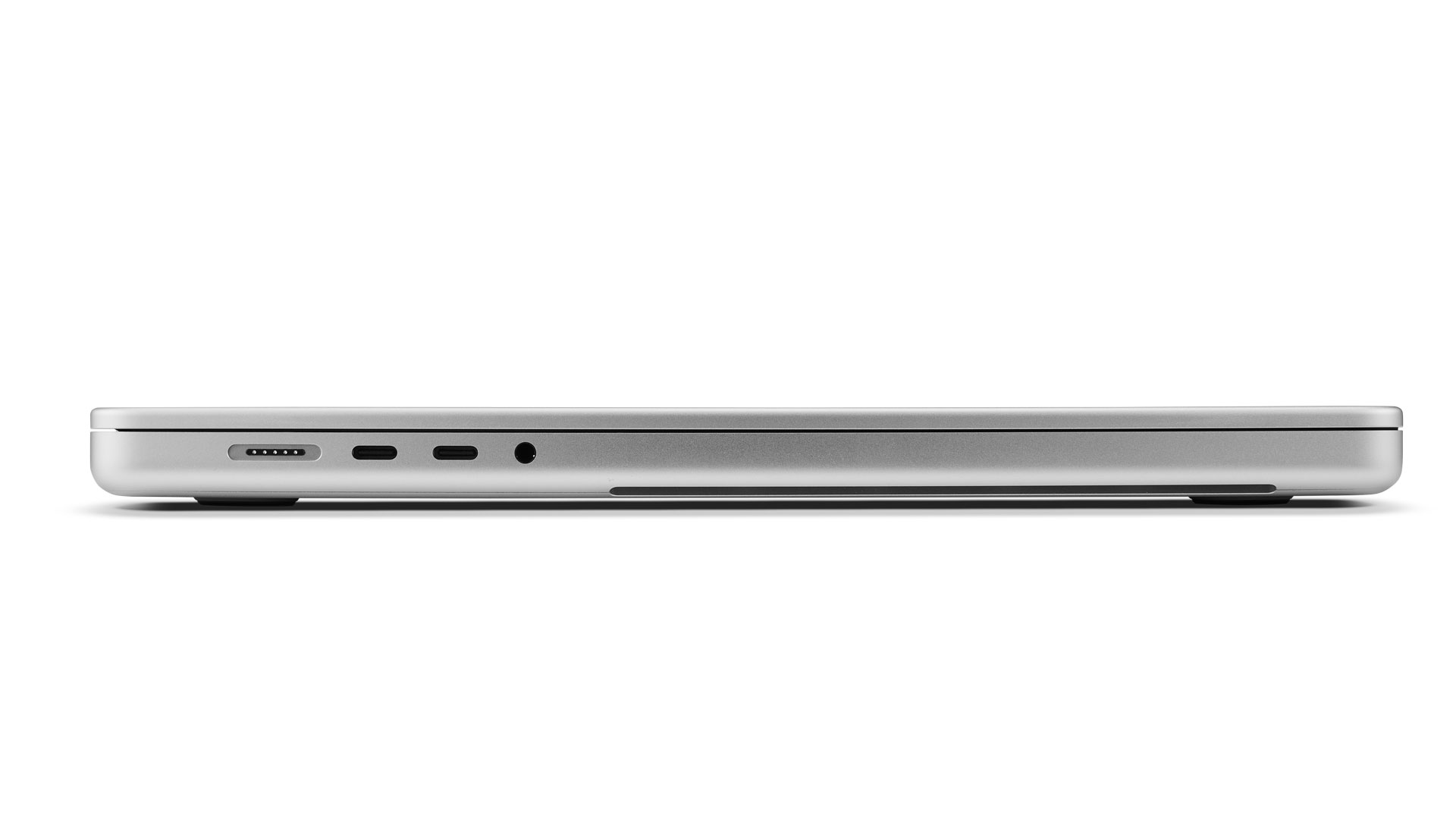
Launched alongside its 14-inch sibling in January, the MacBook Pro 16-inch (2023) doesn’t so much reinvent what Apple’s laptops can do as refines it, making it slicker and quicker than ever, while retaining all the things about the Apple silicon era we love – incredible performance and battery life, wrapped in a sophisticated and elegant portable package.
The entry-level MacBook Pro 16-inch starts at $2,499 / £2,699 for a model equipped with a 12-core CPU, 19-core GPU M2 Pro, plus 16GB of unified memory and a 512GB SSD. Paying $200 / £200 more gets you an otherwise identical model equipped with a 1TB SSD, and the standard configurations top out at $3,499 / £3,749 for a MacBook Pro 16-inch equipped with a 12-core CPU, 38-core GPU, 16-core Neural Engine M2 Max, 32GB of unified memory and 1TB of solid-state storage.
- M2 Pro chip (12-core CPU, 19-core GPU)
- 512GB storage
- 16GB RAM
- 16.2-inch Liquid Retina XDR display (3,456 x 2,234)
- MagSafe 3, 3x Thunderbolt 4 (UBS-C) ports, 1x HDMI port
- WiFi 6E
- Bluetooth 5.3
Like many Apple products, the MacBook Pro can be equipped with a range of build-to-order options, including both for memory and on-board storage, whether you want it as a laptop for video editing or as a laptop for programming. A fully specced out MacBook Pro 16-inch with a 12-core CPU, 38-core GPU M2 Max, 96GB of memory and 8TB of storage will cost you $6,499 / £6,749.
The model on test here though is more modest, being equipped with a 12-core CPU, 19-core GPU M2 Pro, 32GB of unified memory and 2TB of storage, and costs a considerably less wallet-straining $3,899 / £3,699.
Design and build

Whichever MacBook Pro you choose you’re in for a treat – both the 14-inch and 16-inch model takes all the things you love about the pre-Touch Bar-era Macs and polishes them to perfection.
In the hand, these are gorgeous laptops to look at and to use with a generous helping of ports on their left- and right-hand sides, including 3x Thunderbolt/USB 4 ports, MagSafe 3, an HDMI port, 3.5mm headphone jack and an SDXC card slot, plus BIuetooth 5.3 and Wi-Fi 6E (802.11ax) wireless connectivity.
The keyboard, with its full physical Function key row, is wonderfully tactile and easy to type on, while the generously sized Force Touch trackpad almost looks too big, until you come to use it when its size becomes a virtue. The only thing that possibly counts against it is the MacBook Pro’s weight and size – at 1.68x35.57x 24.81cm and 2.15kg for the 16-inch M2 Pro model, and 2.16kg for the M2 Max, it’s hefty to lug around. Think of it as a desktop replacement with occasional forays out on the road, though, and you won’t go far wrong.
Note: we’ve not mentioned the remaining model in Apple’s MacBook Pro line-up: the 13-inch. That’s because, while it’s still an accomplished machine, it feels more like a throwback to the last of the Intel-era models, with its Touch Bar and limited port selection. The 13-inch is also the only MacBook Pro to come with the standard M2 chip, rather than an M2 Pro or M2 Max, making it more akin to a MacBook Air on steroids than a true ‘Pro’ Mac.
Display and battery life

There are two other things to love about the 2023 MacBook Pro: its display and its battery life. The Liquid Retina XDR display on the 16-inch is truly incredible to look at and to use, with its mini-LED backlighting offering 1,600 nits of peak HDR brightness, plus a 1,000,000:1 contrast ratio. Throw in P3 wide colour gamut support and you have a display you want to drown yourself in – from photo editing to movie viewing, it looks superb. And you get that with a true all-day battery life of up to 22 hours – and that was certainly the case in our tests.
Performance

The arrival of Apple silicon in 2019 has been a true game changer for the Mac. No longer subject to the whims (and shortcomings) of Intel, Apple has been free to create custom chips for its computers that deliver not only in terms of pure power and performance, but also in efficiency – a MacBook Pro with an M2 Pro or Max runs just as quickly on battery as on mains power, and without sending you scurrying for the nearest power socket like Intel-era machines could.
Proof of those power and efficiency gains manifests itself in two ways. Firstly, the M2 Pro offers 30% faster graphics performance than the M1 Pro that preceded it, while also delivering twice the memory bandwidth (at 200GB/sec) of the standard M2 launched in 2022. And the M2 Max goes even further, also marking a 30% increase in GPU performance over the M1 Max and four times the memory bandwidth (400GB/sec).
Those claims are borne out by our benchmarks. From Geekbench 5 to Handbrake, Rise of the Tomb Raider to DaVinci Resolve, the MacBook Pro 16-inch we had on test delivered, and then kept on delivering.
In Geekbench 5, the M2 Pro MacBook Pro achieved an average single-core performance score of 1,961 points, putting it way ahead of the M2 MacBook Pro 13-inch we benchmarked last year (1,903) and even further ahead of the M1 Pro MacBook Pro, which achieved 1,703.
It’s a similar story in Handbrake, where we transcode an hour’s worth of 4K video. Here, the M2 MacBook Pro achieved the desired result in 14 mins 3 secs, compared to the 23 mins 13 secs of the M2 MacBook Pro 13-inch (2022), although it was slower than the M1 Pro MacBook Pro (2021), which achieved the same result in 8 mins 40 seconds – a result of slower SSD speeds perhaps.
In DaVinci Resolve, we were able to render and export an effects-laden video in 9 mins 31 secs on the M2 Pro MacBook Pro, compared to 19 mins 38 secs on the M2 MacBook Pro 13-inch (2022) and 10 mins 57 secs on M1 Pro MacBook Pro 16-inch from 2021.
In Rise of the Tomb Raider too, the M2 Pro MacBook Pro was butter-smooth when running our benchmarks, peaking at 49fps, despite the game not being optimised for Apple silicon. While that’s only 10fps higher than the M1 Pro MacBook Pro from 2021, it’s better than the 25fps achieved by last year’s M2 MacBook Pro.
Should I buy it?
With Apple redefining the MacBook Pro in all kinds of interesting ways two years ago, it’s no surprise that the 2023 version should feel evolutionary rather than revolutionary. But it’s no worse for that. With new Apple silicon, and careful, considered refinements on board, the MacBook Pro 16-inch remains one of the best – if not the best – laptops in the world right now. From its design and build to its power, performance and battery life, it’s an incredible machine to own and to use. We can’t wait to see what Apple does next.







